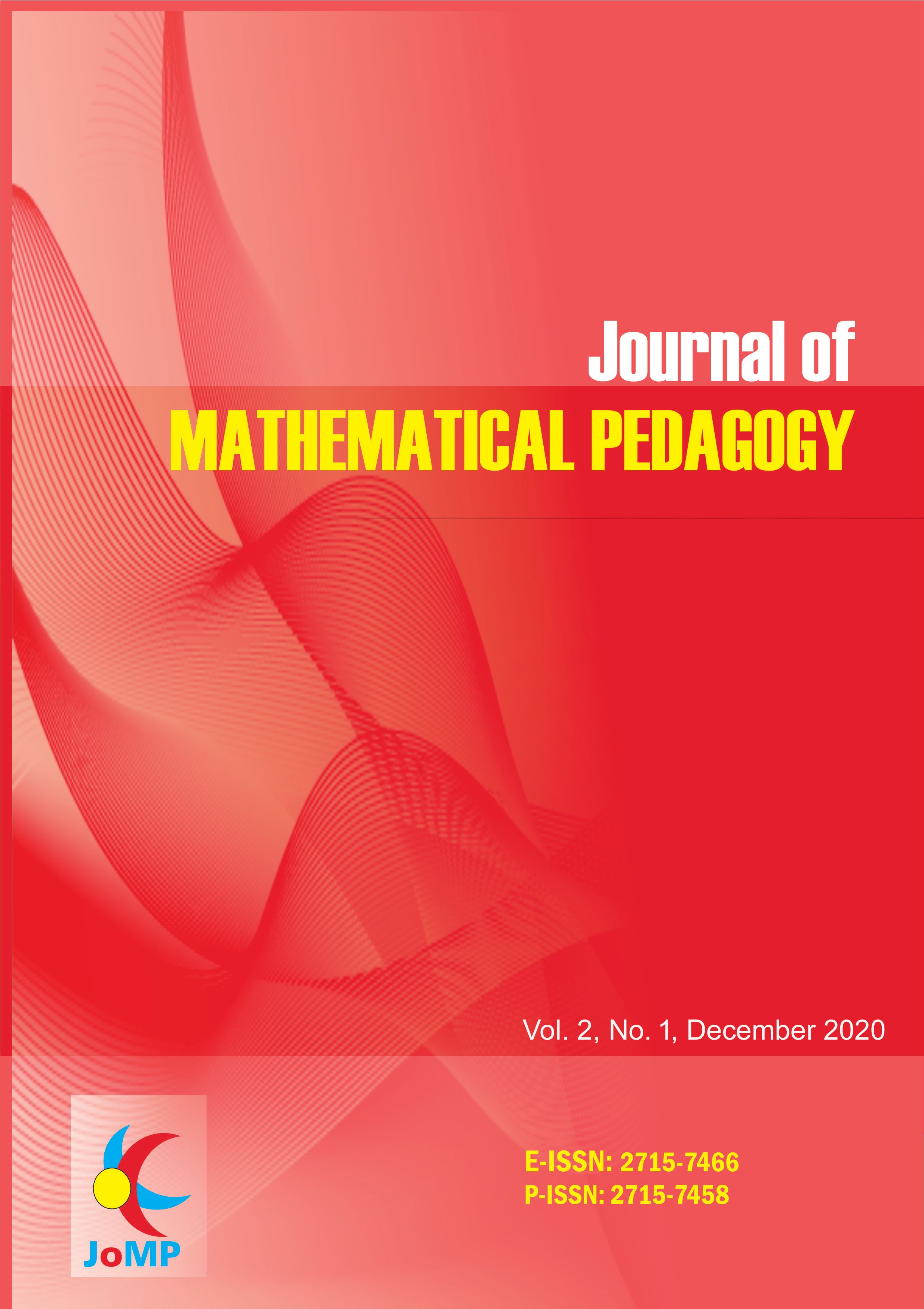The Effect of Learning Style on Academic Achievement of Prospective Teachers in Mathematics Education
DOI:
https://doi.org/10.26740/jomp.v2n1.p26-31Keywords:
learning style, academic achievement, prospective teachers, mathematics educationAbstract
This study aims to determine the effect of learning styles on academic achievement of prospective teachers in mathematics education. The method used in this research is descriptive analytic with cross sectional approach. The subjects in this study were 66 students of 5th semester mathematics education teacher candidates at the State Islamic University of Sunan Ampel Surabaya, Indonesia. Data were collected by two methods, namely the questionnaire method or questionnaire through the Visual Auditory and Kinesthetic (VAK) test to collect student learning style data and the documentation method to collect student academic achievement data which was carried out by using the chi square test to see the relationship between learning styles and academic achievement. The results showed that the most student learning styles were visual learning styles (54.5%), then auditory learning styles (24.2%) and finally kinesthetic learning styles (13.6%). Furthermore, there were some students who chose more than one learning style, namely visual-auditory (3.1%), visual-kinesthetic (3.1%), and auditory-kinesthetic (1.5%). After performing the statistical test, namely the chi square test, it is obtained that X2 count = 4.497 is greater than X2 table = 3.9403 at a significant level of 0.05. This shows that there is a relationship between learning styles and academic achievement of prospective mathematics education teacher students.
Keywords: learning style, academic achievement, prospective teachers, mathematics education
References
Ary, D., Jacobs, L. C., Irvine, C. K. S., & Walker, D. (2018). Introduction to research in education. Cengage Learning.
Baartman, L. K., & De Bruijn, E. (2011). Integrating knowledge, skills and attitudes: Conceptualising learning processes towards vocational competence. Educational Research Review, 6(2), 125-134.
De Porter, B., & Hernacki, M. (2000). Quantum learning. PT Mizan Publika.
Dunn, R. (1984). Learning style: State of the science. Theory into practice, 23(1), 10-19.
Dunn, R., Beaudry, J. S., & Klavas, A. (2002). Survey of research on learning styles. California Journal of Science Education, 2(2), 75-98.
Febriani, S., Taufik, M., & Verawati, N. N. S. P. (2019). Pengaruh Model Guided Discovery Learning Dengan Metode Eksperimen Terhadap Hasil Belajar Fisika Peserta Didik MAN 1 Mataram Ditinjau Dari Gaya Belajar VAK. Jurnal Pendidikan Fisika dan Teknologi, 5(1), 82-90.
Ghufron, M. & Risnawita, S. (2013). Gaya Belajar Kajian Teoritik. Jogjakarta: Pustaka Pelajar
Irham, M dan Wiyani, N.A. (2013). Psikologi Pendidikan: Teori dan Aplikasi dalam Proses Pembelajaran. Yogyakarta: Ar-Ruzz Media
Jalil, R., M. (2014). Hubungan Gaya Belajar (Visual, Auditorial, Kinestetik) Siswa dan Hasil Belajar Biologi Siswa Kelas VIII SMPN 1 Bontomarannu Kabupaten Gowa. Makassar: UNM
Machfoedz, I. (2005). Teknik Membuat Alat Ukur Penelitian Bidang Kesehatan, Keperawatan dan Kebidanan.
Marriott, P. (2002). A longitudinal study of undergraduate accounting students' learning style preferences at two UK universities. Accounting Education, 11(1), 43-62.
Miles, M. B., Huberman, A. M., & Saldaña, J. (2018). Qualitative data analysis: A methods sourcebook. Sage publications.
Rose, C & Nichol, M.J. (1997). Accelerated Learning for the 21st Century.Translated by Deddy Ahimsa..Bandung: Nuansa
Saputri, F. I. (2016). Pengaruh Gaya Belajar Visual, Auditori, dan Kinestetik Terhadap Prestasi Bejajar Siswa. Jurnal Prima Edukasia, 3(01), 25-36.
Schroeder, C. M., Scott, T. P., Tolson, H., Huang, T. Y., & Lee, Y. H. (2007). A metaanalysis of national research: Effects of teaching strategies on student achievement in science in the United States. Journal of Research in Science Teaching: The Official Journal of the National Association for Research in Science Teaching, 44(10), 1436-1460.
Suryabrata, S. (2004). Psikologi Pendidikan. Yogyakarta: Rajawali Pers.
Takeuchi, M. A., & Liu, S. (2021). œI am more of a visual learner: The disciplinary values and identities in school mathematics learning and group work. The Journal of Mathematical Behavior, 61, 100835.
Van Dinther, M., Dochy, F., & Segers, M. (2011). Factors affecting students self-efficacy in higher education. Educational research review, 6(2), 95-108.
Vermunt, J. D., & Vermetten, Y. J. (2004). Patterns in student learning: Relationships between learning strategies, conceptions of learning, and learning orientations. Educational psychology review, 16(4), 359-384.
Wulandari, R. (2011). Hubungan Gaya Belajar dengan Prestasi Belajar Mahasiswa Semester IV Program Study D IV Kebidanan Universitas Sebelas Maret. Jurnal Kesehatan Kusuma Husada.Vol (2): 1, 45-52.
 Abstract views: 1419
,
Abstract views: 1419
, PDF Downloads: 1179
PDF Downloads: 1179





